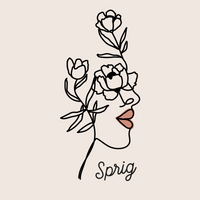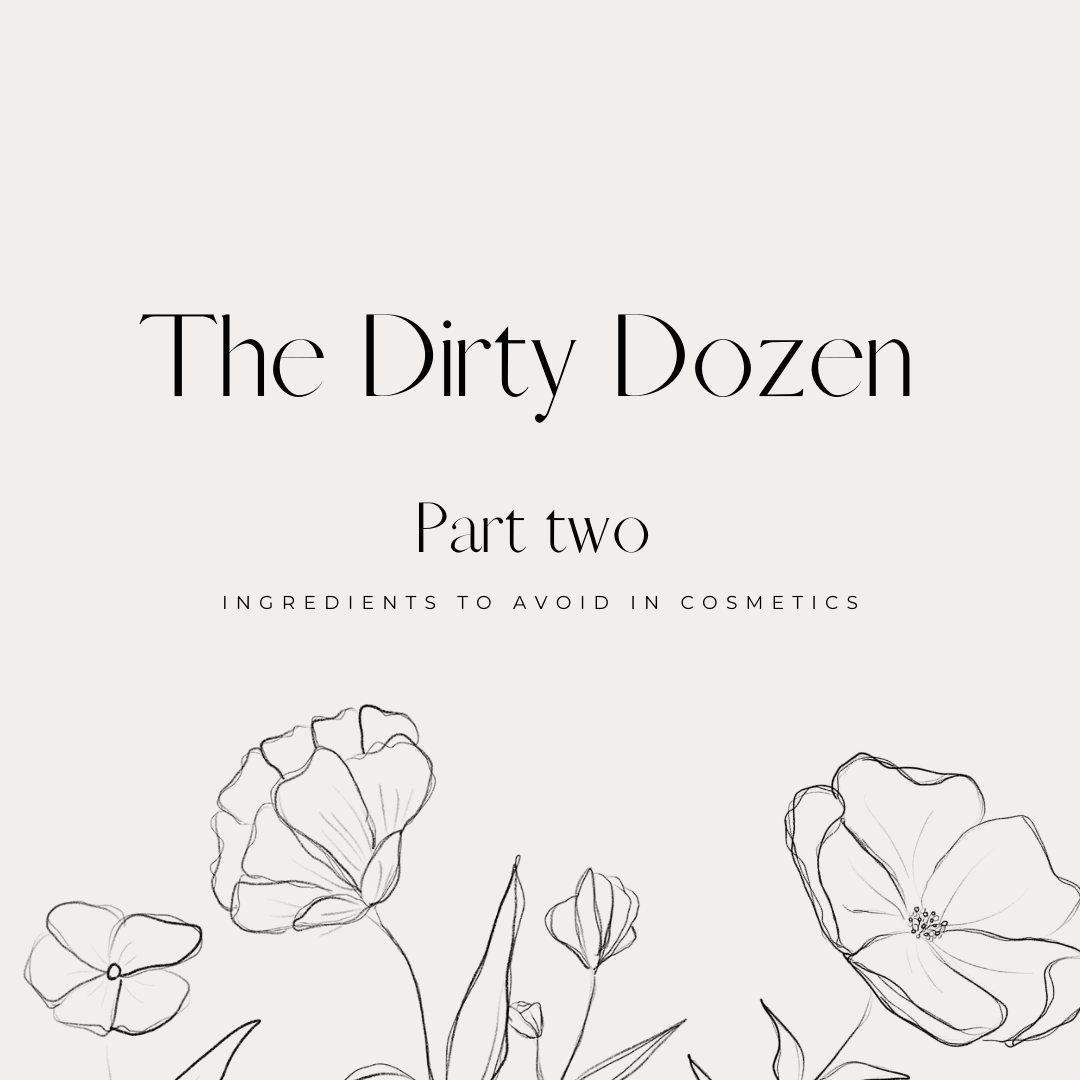The Dirty Dozen | Ingredients to Avoid in Cosmetics - PART 1

When starting my journey to clean beauty I started with a quick and harsh standard, if I didn't know what the ingredient was and couldn't pronounce it, (without researching) it wasn't coming into my home. But here is the thing, there are a lot of totally safe ingredients that I cannot pronounce, and I will be the first to admit I fall short in the vocabulary area of life. Which is why I have learned to really love the Dirty Dozen List. These are 12 of the top toxic chemicals and ingredients found in beauty products and a quick guide to stay away from them.
This is long, and a lot of words I can't say but it's worth the read, or at least a skim because knowledge is key when it comes to diving into the clean beauty world, and these 12 words, once learned, will open your eyes and make skimming labels a heck of a lot easier! Here are the first 6 out of 12 toxic chemicals and ingredients to avoid in cosmetics (and really all products):
BHA and BHT: BHA and BHT are preservatives/product stabilizers that come in the form of synthetic antioxidents. They are known to cause skin irritation and have been flagged as potential carcinogens. There is also strong evidence of them being endocrine disruptors. The EWG gives them a 5-6, and we don't like to do above a 2 in my household. BHA and BHT are most commonly found in lipsticks, moisturizers, and diaper creams.
Coal Tar Dyes: You will see this labeled as P-phenylenediamine or CI followed by a number. Coal tar dyes are most commonly found in hair dye, anti dandruff products and lipstick. It is derived from petroleum (a by-product from coal processing) and can be composed of several other toxic ingredients. The EGW give this a 7 which is "in the red" and a definite no-no. Coal tar dyes are recognized as a human carcinogen and linked to brain damage as well as recognized by the EPA as a hazardous air pollutant being hazardous to human respiratory systems.
DEA-related ingredients: Also known as Diethanolamine it is used to make cosmetics creamy or sudsy and adjusts the PH. The EWG ranks DEA products as a 10 and here is why; it’s known to be toxic to your respiratory system, it’s listed as a carcinogen, it’s a high skin allergen and irritant and here is the kicker, used when pregnant can cause permanent brain damage in developmental stages of babies.
Commonly found in: creamy and foaming products such as moisturizer, shampoo dyes, mascara, foundation, fragrances, sunscreens, dry cleaning solvents, paint, pharmaceuticals.
DPB Dibutyl (phthalates): This is a fragrance ingredient (one of those many "hidden") Solvent and Plasticizer and again rated a 10 by the EWG and for good reason! This ingredient is commonly found in nail polish, hairspray and synthetic perfumes and fragrance. DPB is a known respiratory toxicant, and is a known Endocrine disruptor. There are also studies linking it to developmental toxicant for babies. Ladies this is YOUR hormones! Major nail polish companies are still using these chemicals in their products.
Parabens: Parabens are used as a preservative in cosmetics, skincare and as an ingredient in fragrance. An estimated 75%-90% of cosmetics contain parabens. Parabens are a endocrine disrupter, they have been found in breast cancer tissue which lead reachers to believe they may be a carcinogen. They can mimic estrogen, causing hormonal disruption in woman and they believe in men as well. When topically applied they can react to UVB causing pre-mature aging.
Other names: Methylparaben, butylparaben, and propylparaben are some of the most common parabens in cosmetics. Other chemicals in this class generally have “paraben” in their names (e.g., isobutylparaben, ethylparaben, etc.).
Parfum (fragrance): The word Fragrance or Perfume on a label is used to discribe an undisclosed mixture of various ingredients. There are approximately 3,000 ingredients/chemicals that are covered by the term. These mixtures do not have to be disclosed and are covered under federal law as trade secrets and classified information. They are linked to allergic reactions, exacerbate asthma, endocrine disruption and individual ingredients covered by the term are known carcinogens, endocrine disruptors, nuero toxins and more. Parfum and fragrance can be found in most cosmetics, laundry detergents, soaps, cleaning products, lotions and more. Even "unscented" products typically contain the ingredient listed as perfume or fragrance as they use them to mask smell giving the illusion of no scent. Cologne and Parfumes can contain on average 14 additional ingredients not listed on the label.
You made it! 6 out of 12, and you guys, it is a lot of information but it is also sad and scary that these ingredients are in common everyday products, it’s not just cosmetics, it is in your soaps, in your clothes (yes your clothes), your children's products and so much more. I urge you to start reading your labels and fill yourselves with knowledge and the ability to at least spot these 12 words on a label.
A great documentary is "Stink" it is available on Netflix and follows a dad as he tries to uncover what ingredients are covered under the term fragrance or perfum after he spotted it listed on his children's pajamas.
These are stats and verbiage adopted from the EWG skin deep website. The EWG offers an in-depth look at ingredients and the effects that they have on our systems both internally and externally. They rate in three main categories and then break it down little further: 1. Cancer 2. Developmental and Reproduction 3. Allergies and Immunotoxicity. They rate ingredients and chemicals on a scale of 1-10; 1 being the lowest and safe, 10 being high and dangerous. They pull their data from numerous sources and studies to make sure they are bringing accurate information. The EWG Skin Deep website it a great guide when checking ingredients on your labels that you feel unsure about. I have also collected information from various blogs, and source over time that I am including in the following information. We also love the Think Dirty app as a quick guide while shopping.



Comments